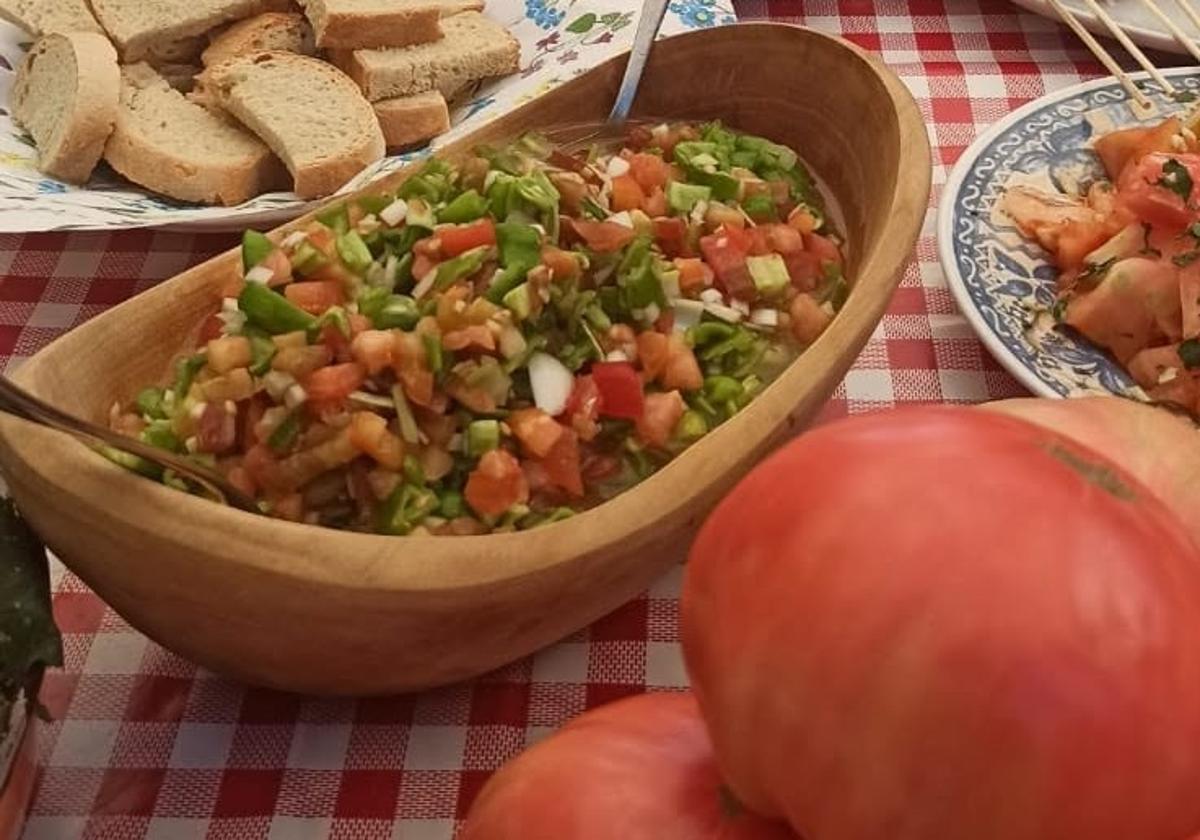The pink Indiana tomato: the Serranía de Ronda variety known as the 'caviar of the countryside'
Although its cultivation has recovered thanks to growers of traditional and organic crops, it is not always easy to find it on sale in local greengrocers
They are fleshy, succulent and can weigh up to two kilos each. The pink tomato called Indiana is a little-known variety that is increasingly being cultivated in Ronda and the surrounding area, where it had practically vanished from all the traditional places that used to grow it. Today there are some growers who sell them to local shops in the area, but most go to prestigious restaurants in the Serranía de Ronda and along the Costa del Sol and even to the Campo de Gibraltar.
Due to its size, it can be confused with the increasingly well-known 'huevo de toro' tomato. This pink-skinned tomato, however, is from La Indiana, a village in Ronda where there are also many vineyards. It differs most of all from the rest because of its colour: a light pink tone to the skin. In addition, it is usually round and slightly flattened in the centre. Its flavour is intense and sweet and its texture is more fleshy than other tomato varieties. Let's not also forget its juiciness. For this reason, it is regarded as a midsummer delicacy to bring to the table, especially when eaten raw. Some people have even given it a slogan, selling it as 'the caviar of the countryside'.
Why did it almost disappear off the food map?
What puzzles many is, if it has so many positive attributes, why did it almost disappear off the food map? The reason is that there is one big issue with commercialising it: it has a very thin skin and has to be handled with great care from the moment it is picked off the plant until it reaches its point of sale. Moreover, like other varieties, it should not be picked too green and, if it is ripe, it needs eating fast.
Jacobo García, owner of the farm 'La 21', grows it on his plot of land called Huerta Albalate in the municipality of Benalauría. He has been dealing with these and other setbacks for seven years now. While his speciality is growing leafy vegetables, he likes growing this variety because "this tomato is later than other varieties."
In fact, they do not usually go on sale until August, while other competing varieties, such as the aforementioned 'huevo de toro' (increasingly prevalent in the Guadalhorce Valley), are brought to market as early as July. It is in May that work begins on the seedlings, which is two months later than the majority of tomatoes grown in Spain. This custom may be associated with the idea of preventing the last frosts in the Serranía de Ronda from affecting the young plants.
Jacobo has been working for years in organic farming, becoming a benchmark in the Serranía de Ronda. "My tomatoes only rely on sheep and goat manure and water," he says. This farmer, based in Benalauría but originally from the Campo de Gibraltar, is one of those who decided to sell this variety directly to restaurants. Among them, he makes special mention of Azulete, in the village of Gaucín (also in the Serranía de Ronda), and Fresco, located in Sotogrande marina.
What does it cost?
The retail price is usually around 3.50 euros per kilo, although some variables must be considered - for example, whether they are organically grown, which can be slightly more expensive. In addition to coming across them in some restaurants, where they are usually prepared quite simply, they can also be found on sale locally when in season, especially during the month of August.
It is also important to keep in mind that, due to its similarity to other varieties, it can easily be confused with others before you actually taste the difference. As such, you must be very sure that it is an authentic Indiana pink tomato. To do this, you will have to trust the place that is offering it, be that on the menu of a restaurant or on the shelves of a greengrocer's.
Seed bank
It has been almost a decade since the Indiana pink tomato began to recover in the Ronda area thanks to a project set up by the Serranía de Ronda seed bank, in collaboration of the Paulo Freire Rural University, the Mountain and Development Association and Silvema Ronda-Ecologists in Action.
One of the promoters in the recovery of the pink tomato from La Indiana is Rafael Galindo, coordinator for the aforementioned seed bank. "This variety was the first in a series of tomatoes and vegetables that we want to continue recovering in the area," he says.
Currently, this pink tomato is widely grown in family-run vegetable plots in the Serranía de Ronda, but only for personal consumption. "At the moment, there are four or five who are professionals and sell them from their land", says Galindo. "Little by little, it's becoming known among chefs and is becoming more widespread, but with the limited means we have, it can only happen at this pace-"
In addition to the Indiana pink tomato, the Serranía de Ronda seed bank is also promoting the cultivation of other crops in the area, such as the 'arenensis' tomato (smaller and ideal for salads), the persimmon or the trailing version. Vegetables such as the white aubergine from Júzcar and the 'cuerno de toro' (bull's horn) pepper, among others, are also being promoted.

